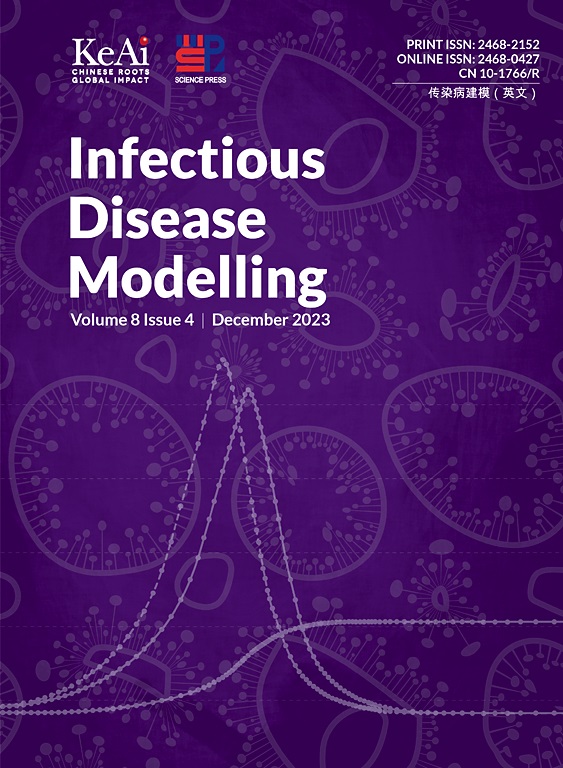Impact of high-order time-delayed information on epidemic propagation in multiplex networks
IF 2.5
3区 医学
Q1 Medicine
引用次数: 0
Abstract
Traditional epidemic models often overlook disease incubation periods and high-order social interactions, limiting their ability to capture real-world transmission dynamics. To address these gaps, we develop a stochastic model that integrates both factors, investigating their combined effects on information diffusion and disease spread. Our framework consists of a two-layer network: an awareness layer, where disease-related information propagates through high-order delayed interactions, and an epidemic layer, where disease transmission follows an SIS model with incubation delays. Using a Markov chain approach, we derive outbreak thresholds and perform numerical simulations to assess the impact of delayed awareness adoption on epidemic outcomes. High-order delayed interactions accelerate information spread compared to traditional pairwise models. Interestingly, while incubation periods increase the risk of hidden transmission, they also provide a crucial window for awareness diffusion, potentially mitigating outbreaks. This dual role of incubation prolonging undetected transmission while enabling proactive awareness dissemination underscores the importance of synchronizing public health interventions with disease incubation phases.
多路网络中高阶时延信息对流行病传播的影响
传统的流行病模型往往忽略了疾病潜伏期和高阶社会互动,限制了它们捕捉真实世界传播动态的能力。为了解决这些差距,我们开发了一个集成这两个因素的随机模型,研究它们对信息扩散和疾病传播的综合影响。我们的框架由两层网络组成:感知层,其中疾病相关信息通过高阶延迟交互传播;流行病层,其中疾病传播遵循具有孵化延迟的SIS模型。使用马尔可夫链方法,我们得出了爆发阈值,并进行了数值模拟,以评估延迟意识采用对流行病结果的影响。与传统的两两模型相比,高阶延迟交互加速了信息的传播。有趣的是,虽然潜伏期增加了隐性传播的风险,但它们也为传播认识提供了一个关键窗口,有可能减轻疫情。潜伏期延长了未被发现的传播,同时使人们能够主动宣传,这一双重作用强调了将公共卫生干预措施与疾病潜伏期同步的重要性。
本文章由计算机程序翻译,如有差异,请以英文原文为准。
求助全文
约1分钟内获得全文
求助全文
来源期刊

Infectious Disease Modelling
Mathematics-Applied Mathematics
CiteScore
17.00
自引率
3.40%
发文量
73
审稿时长
17 weeks
期刊介绍:
Infectious Disease Modelling is an open access journal that undergoes peer-review. Its main objective is to facilitate research that combines mathematical modelling, retrieval and analysis of infection disease data, and public health decision support. The journal actively encourages original research that improves this interface, as well as review articles that highlight innovative methodologies relevant to data collection, informatics, and policy making in the field of public health.
 求助内容:
求助内容: 应助结果提醒方式:
应助结果提醒方式:


